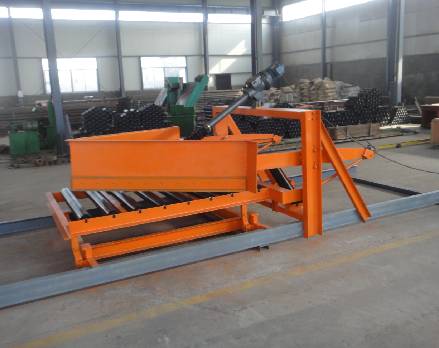 Afrikaans
Afrikaans  Albanian
Albanian  Amharic
Amharic  Arabic
Arabic  Armenian
Armenian  Azerbaijani
Azerbaijani  Basque
Basque  Belarusian
Belarusian  Bengali
Bengali  Bosnian
Bosnian  Bulgarian
Bulgarian  Catalan
Catalan  Cebuano
Cebuano  Corsican
Corsican  Croatian
Croatian  Czech
Czech  Danish
Danish  Dutch
Dutch  English
English  Esperanto
Esperanto  Estonian
Estonian  Finnish
Finnish  French
French  Frisian
Frisian  Galician
Galician  Georgian
Georgian  German
German  Greek
Greek  Gujarati
Gujarati  Haitian Creole
Haitian Creole  hausa
hausa  hawaiian
hawaiian  Hebrew
Hebrew  Hindi
Hindi  Miao
Miao  Hungarian
Hungarian  Icelandic
Icelandic  igbo
igbo  Indonesian
Indonesian  irish
irish  Italian
Italian  Japanese
Japanese  Javanese
Javanese  Kannada
Kannada  kazakh
kazakh  Khmer
Khmer  Rwandese
Rwandese  Korean
Korean  Kurdish
Kurdish  Kyrgyz
Kyrgyz  Lao
Lao  Latin
Latin  Latvian
Latvian  Lithuanian
Lithuanian  Luxembourgish
Luxembourgish  Macedonian
Macedonian  Malgashi
Malgashi  Malay
Malay  Malayalam
Malayalam  Maltese
Maltese  Maori
Maori  Marathi
Marathi  Mongolian
Mongolian  Myanmar
Myanmar  Nepali
Nepali  Norwegian
Norwegian  Norwegian
Norwegian  Occitan
Occitan  Pashto
Pashto  Persian
Persian  Polish
Polish  Portuguese
Portuguese  Punjabi
Punjabi  Romanian
Romanian  Russian
Russian  Samoan
Samoan  Scottish Gaelic
Scottish Gaelic  Serbian
Serbian  Sesotho
Sesotho  Shona
Shona  Sindhi
Sindhi  Sinhala
Sinhala  Slovak
Slovak  Slovenian
Slovenian  Somali
Somali  Spanish
Spanish  Sundanese
Sundanese  Swahili
Swahili  Swedish
Swedish  Tagalog
Tagalog  Tajik
Tajik  Tamil
Tamil  Tatar
Tatar  Telugu
Telugu  Thai
Thai  Turkish
Turkish  Turkmen
Turkmen  Ukrainian
Ukrainian  Urdu
Urdu  Uighur
Uighur  Uzbek
Uzbek  Vietnamese
Vietnamese  Welsh
Welsh  Bantu
Bantu  Yiddish
Yiddish  Yoruba
Yoruba  Zulu
Zulu types of pulley in belt conveyor
Types of Pulleys in Belt Conveyors
Belt conveyors are an essential component of many industrial processes, providing a reliable and efficient means of transporting materials over various distances. A critical part of any belt conveyor system is the pulley, which plays a vital role in the operation and efficiency of the conveyor. There are several types of pulleys used in belt conveyors, each serving a specific purpose.
Types of Pulleys in Belt Conveyors
2. Idler Pulley Idler pulleys are designed to support the belt during its transport and are crucial for maintaining the tension in the system. These pulleys do not drive the belt; instead, they keep it in place and provide a smooth surface for it to run over. Idler pulleys come in several configurations, including troughing, flat, and return types, depending on the application's requirements.
types of pulley in belt conveyor

3. Return Pulley As the name suggests, return pulleys are located at the end of the conveyor system and help guide the belt back to the drive pulley. They are essential for maintaining the continuous operation of the conveyor. Return pulleys can also be designed to handle heavy loads and may include features such as rubber coatings for improved friction and wear resistance.
4. Snub Pulley The snub pulley is often used to increase the friction between the drive pulley and the belt, enhancing the power transmission efficiency. This pulley can also help change the direction of the belt and improve its handling capabilities in tight spaces. Snub pulleys are usually placed at an angle to the drive pulley to achieve these objectives.
5. Tail Pulley The tail pulley is located at the opposite end of the drive pulley and serves as a terminus for the belt. It helps control the belt's tension and alignment as it returns to the drive end. Tail pulleys can be equipped with various features to reduce wear and improve service life.
In conclusion, the various types of pulleys in belt conveyors are fundamental to their operation, each playing a specific role in ensuring efficiency, stability, and durability. Understanding the functions and characteristics of drive, idler, return, snub, and tail pulleys is essential for designing and maintaining effective conveyor systems in diverse industrial applications. By selecting the appropriate type of pulley for a given application, operators can enhance the performance and reliability of belt conveyors, ultimately contributing to improved productivity and reduced downtime.
-
Revolutionizing Conveyor Reliability with Advanced Rubber Lagging PulleysNewsJul.22,2025
-
Powering Precision and Durability with Expert Manufacturers of Conveyor ComponentsNewsJul.22,2025
-
Optimizing Conveyor Systems with Advanced Conveyor AccessoriesNewsJul.22,2025
-
Maximize Conveyor Efficiency with Quality Conveyor Idler PulleysNewsJul.22,2025
-
Future-Proof Your Conveyor System with High-Performance Polyurethane RollerNewsJul.22,2025
-
Driving Efficiency Forward with Quality Idlers and RollersNewsJul.22,2025





























